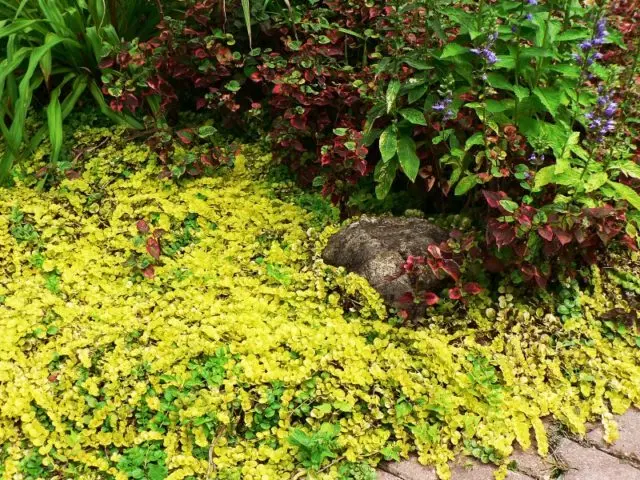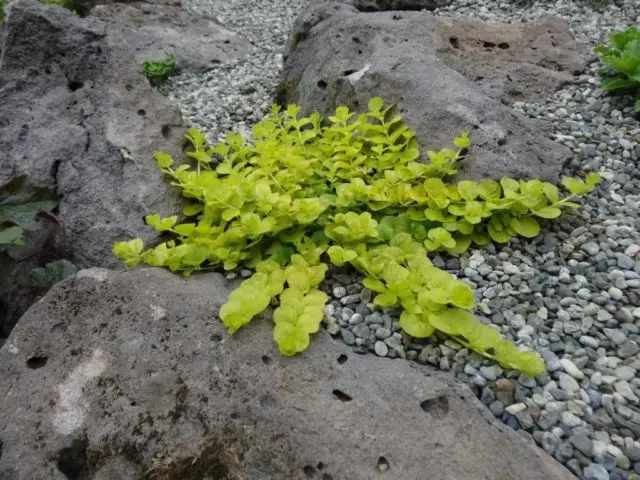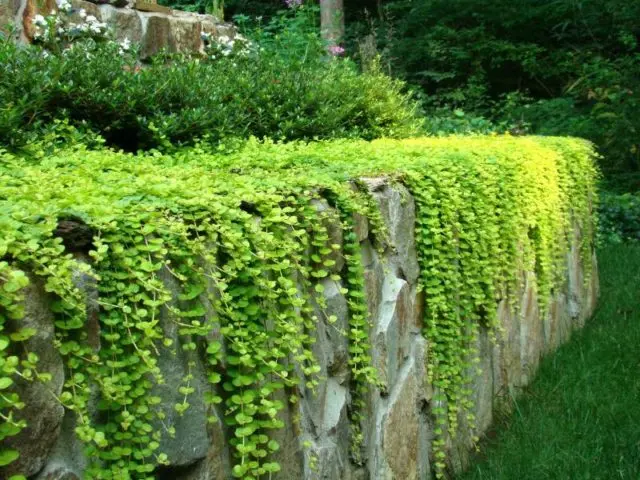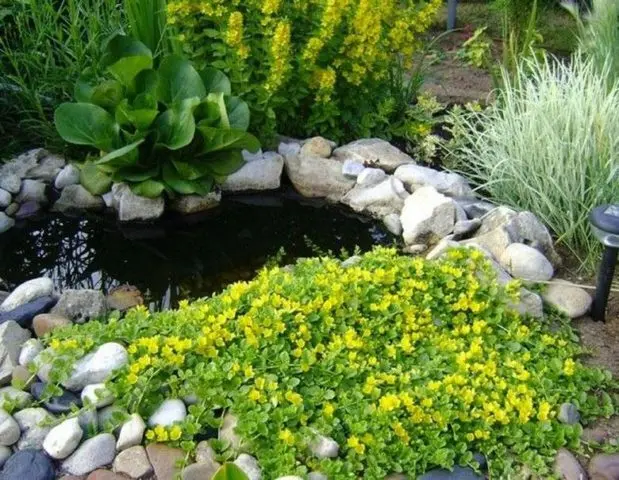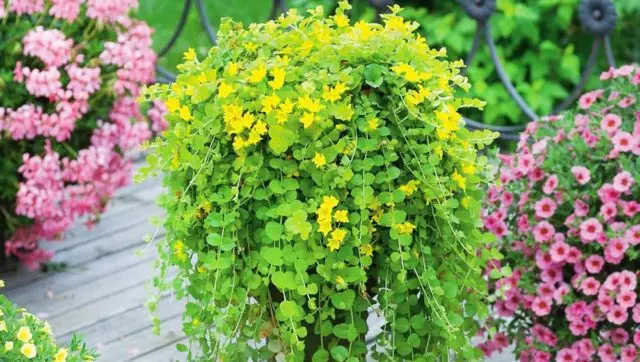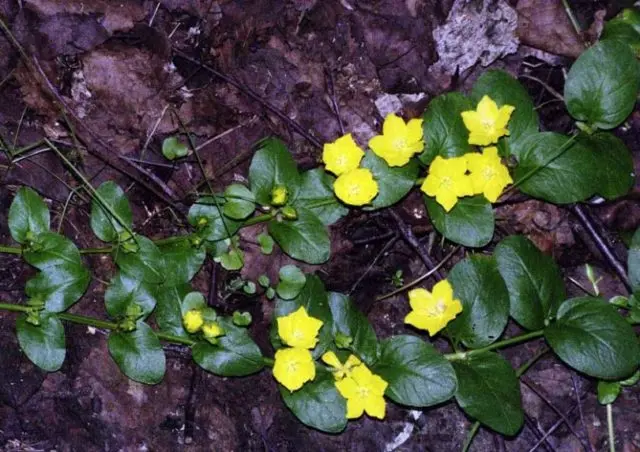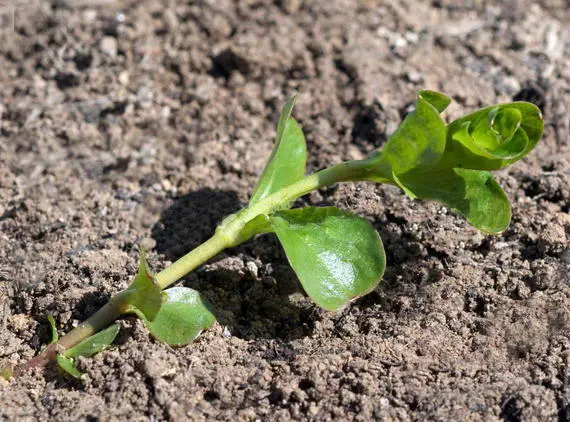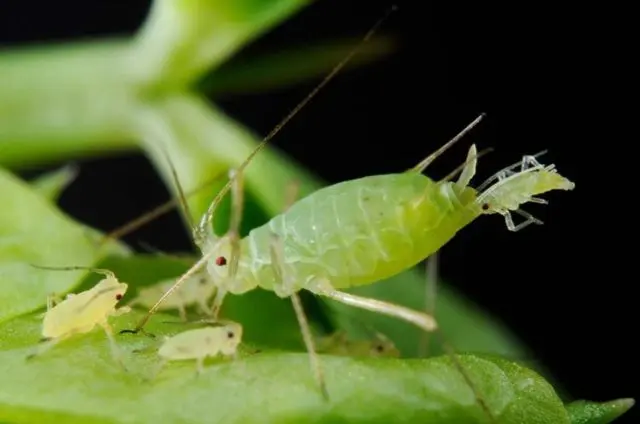Contents
Monetary loosestrife is a perennial plant that is ubiquitous in nature and has a decorative value. Growing it in the garden is not at all difficult if you know the basic rules for caring for a crop.
General description of coin loosestrife
Monetary loosestrife, or meadow tea, comes from the Primrose family and grows wild in moist soils, mainly in the western part of Eurasia, as well as in Japan and North America. The stem of the plant is smooth, knotty and creeping along the ground, densely covered with green rounded leaves with an uncut edge. The length of the stem can grow up to 60 cm, but at the same time it practically does not rise above the ground.
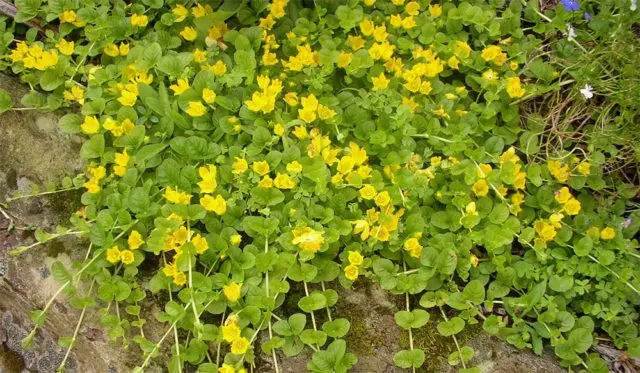
Monetary loosestrife – creeping groundcover
Small yellow flowers consist of 5 pointed petals. In the core of the flowers are large corollas. Bright yellow, rounded flowers vaguely resemble coins, which explains the name of the plant.
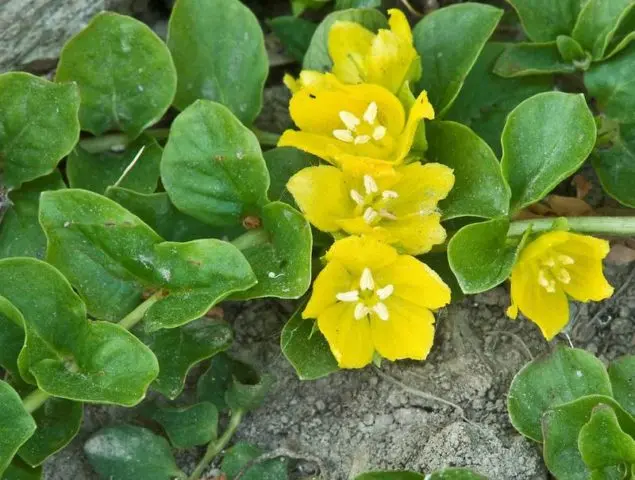
Perennial flowers are a bit like gold coins
The flowering of the coined loosestrife falls on the period from the beginning of June to August, depending on the location and weather, in total it takes about 3 weeks.
Where and how does the coin loosestrife grow
The wild-growing plant, coined loosestrife, is found in the southern and temperate latitudes of Eurasia, and can also be seen in Japan and North America. For growth, the coined loosestrife chooses places with high humidity – damp meadows and ravines, forest glades, banks of reservoirs and swamps.
The ground cover plant forms a dense carpet directly on the ground, and it can grow both on horizontal surfaces and on slopes. The perennial is very unpretentious and frost-resistant, it takes root well on any soil.

In nature, the plant can often be seen near water bodies.
Types and varieties of coin-leaved loosestrife
Monetary loosestrife has a beautiful flowering, so it is valued as a cultivated plant. There are decorative varieties of perennial, they retain the low requirements of the culture for growing conditions, but look more attractive than the usual coined loosestrife.
Monetary loosestrife Aurea (Aurea)
Variety Aurea is an ornamental plant with yellow-green and golden leaves. The perennial is able to form a low cover on the soil up to 5-15 cm above the ground and up to 30 cm wide. Flowering in the Aurea variety is normal, yellow, lasts about 20 days from June to August.
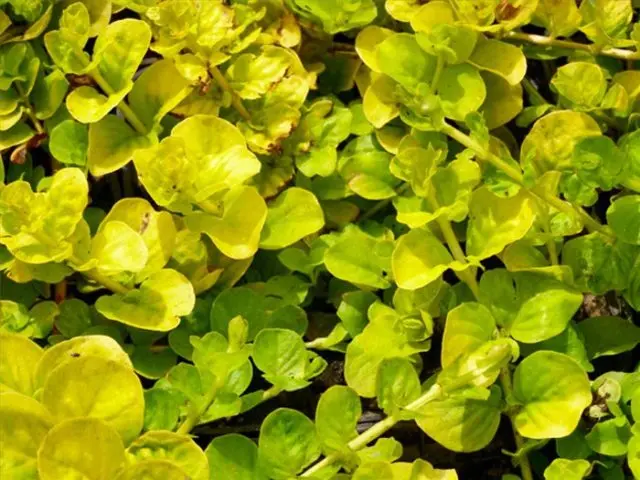
Aurea variety is intended for growing in the sun
Unlike common loosestrife, Aurea grows best in full sun. It is also possible to plant a variety in the shade, but it will develop more slowly, besides, the leaves will acquire a darker and not so beautiful shade. The variety is frost-resistant and unpretentious, prefers moist fertile soils. It responds well to abundant watering, but also tolerates drought calmly.
Monetary loosestrife Goldiloks (Goldilocks)
Goldilox is another decorative variety of perennial loosestrife. It differs from Aurea in a more saturated golden color of the leaves, and in general the varieties are very similar to each other. Goldilox feels good in lighted areas of the garden and fertile soils, grows up to 30 cm wide and up to about 15 cm in height.
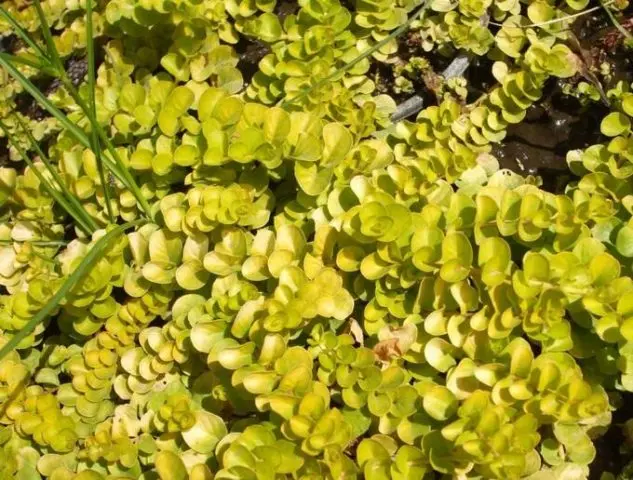
Goldilox has a very bright golden color of foliage.
Goldilox also blooms with yellow flowers 2,5 cm in diameter, and the opened buds can be larger than leaves in size. Flowering takes about 20 days from late May to August, but even after flowering, the variety retains its decorative effect due to the beautiful shade of foliage.
Monetary loosestrife in landscape design + photo
When decorating garden plots, the coined loosestrife plant is very popular because it is a fast-growing and unpretentious ground cover crop. Perennial is used:
- for the formation of a decorative flowering carpet in unoccupied areas;

With the help of meadow tea, you can decorate an empty plot of the garden
- for the decoration of slopes, borders and stone gardens;

Meadow tea looks beautiful in stone gardens
- for decorating arbors, fences and low buildings;

Long stems of the plant adorn hedges and walls of buildings.
- for decorating the shores of natural and artificial reservoirs;

Meadow tea revitalizes the shores of water bodies
- for growing in pots in arbors or on the veranda of the house – the ampelous coined loosestrife looks very beautiful if long leafy stems are left hanging freely.

You can grow a crop in pots and pots
Among the advantages of culture, one can note not only endurance, but also very rapid growth. Usually, gardeners have no problems decorating the desired areas with perennials. On the contrary, more often it is necessary to artificially restrain the plant so that it does not go beyond the allotted area and does not begin to suppress neighboring plantings.
In compositions and flower beds, perennials are often combined with ferns, phloxes, irises, bluebells and other plants that have similar requirements for conditions.
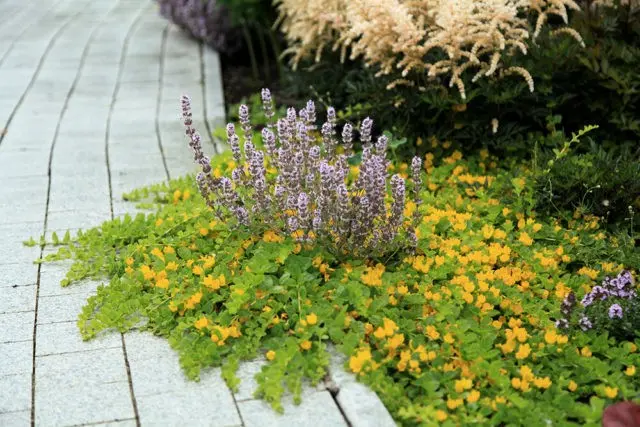
Meadow tea looks beautiful in flower beds
Features of reproduction of the coined loosestrife
It is very simple to propagate the coined loosestrife at their summer cottage. Do it in a vegetative way:
- bush division – adult perennials are dug out of the ground at the end of spring, divided into several parts and planted in new areas;

By dividing the bush, meadow tea breeds very readily
- cuttings, shoots and branches taken from an adult bush in the spring take root very quickly and begin to bloom in the next season.

Grassland tea cuttings take root quickly
Both methods are highly effective, although by dividing the bush, rooting the loosestrife is easier and faster. But the culture is propagated by seeds very rarely, even with successful germination, you have to wait for flowering for at least 2 years, and most often meadow tea simply does not sprout.

Meadow tea seeds are rarely propagated
Rules of landing
It is very easy to plant a coined loosestrife in a summer cottage. It is only necessary to familiarize yourself with the preferences of the culture regarding the place and growing conditions.
Recommended dates
A herbaceous plant, a monetized loosestrife for open ground, is planted throughout the season. This is usually done in the middle of spring, after the soil has completely thawed and the last frosts have passed.
It is also possible to plant meadow tea in autumn, although this method is usually used in the southern regions. In this case, the procedure is carried out in October after leaf fall.
Site selection and soil preparation
It is necessary to plant meadow tea on loose and moist soil, preferably near a reservoir or near groundwater. The land is better to choose fertile and loose. Although the perennial tolerates drought well and is able to grow on heavy soil, in this case it will not be able to please with abundant flowering.
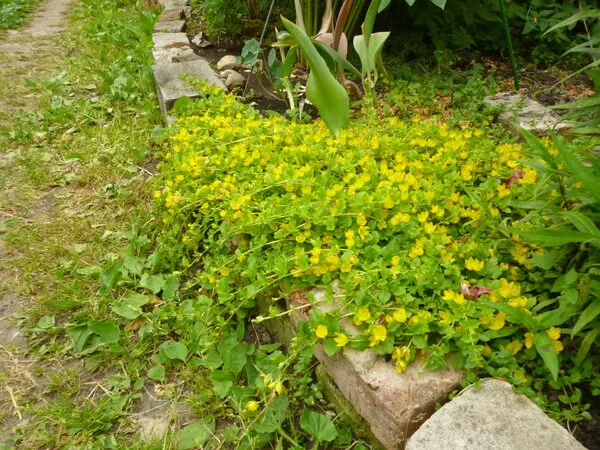
You can plant meadow tea in the sun and in the shade.
If we are talking about a decorative loosestrife with a golden tint of leaves, then you need to plant it in well-lit areas. Common coined loosestrife grows well in the shade.
To achieve beautiful flowering from a perennial, it is advisable to fertilize the soil before planting. The selected area is dug up and manure or rotted compost, peat is introduced into the soil, and complex mineral fertilizers are also added if the soil is scarce.
How to plant
For planting on the site, it is necessary to dig a small hole, in depth it should be twice the root system of loosestrife. When planting several plants at the same time, a space of 50 cm is left between them.
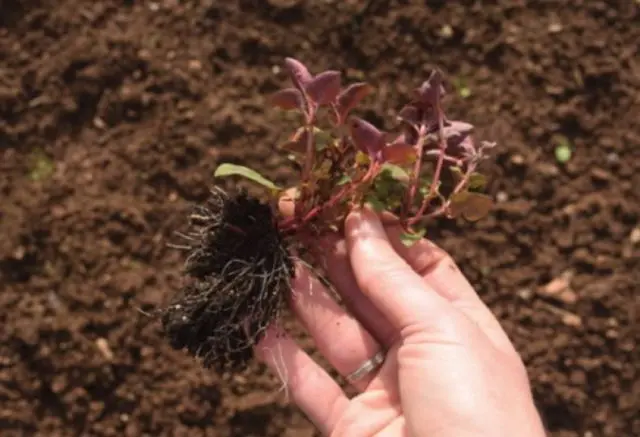
For a creeping perennial, you do not need to dig a deep hole
The hole is half covered with a mixture of garden soil, compost and peat, and then the seedling is lowered into the hole and covered with earth to the top. The perennial is watered abundantly and lightly compacts the soil.
Many gardeners, already at the time of planting, enclose a plot with meadow tea, digging slate or stone around the perimeter into the ground. This prevents overgrowth and makes it easier to care for the plant.
Aftercare
Monet loosestrife is a hardy and undemanding decorative culture. When growing, you need to remember only a few rules.
Watering and fertilizing schedule
If the perennial grows in the sun, then it must be watered – twice or thrice a week. It is necessary that the soil at the roots of the coined loosestrife always remains wet.
When growing a crop in the shade or near water, you can only water on dry summer days. Gardeners should be guided by the actual condition of the soil.

The ground at the roots of meadow tea should always be moist.
It is recommended to fertilize loosestrife only if the perennial grows on poor soil. In this case, in the spring, when watering, a complex mineral fertilizer with a nitrogen content is added to the water. You can also mulch the loosestrife area with peat or humus – this stimulates the rapid growth of the crop.
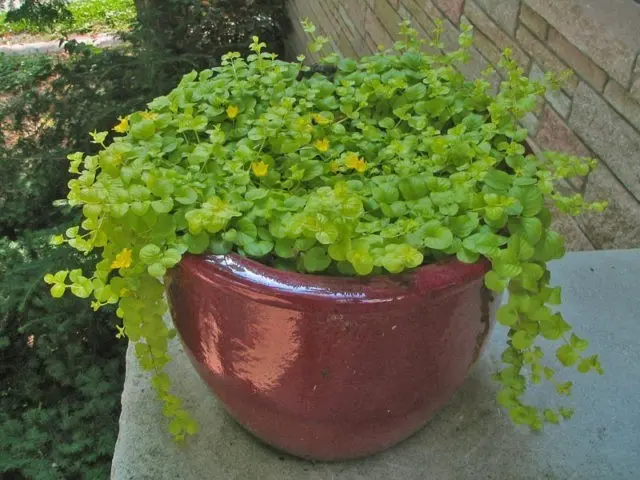
Loosestrife in the ground and in pots are cared for the same way.
Trimming rules
Pruning of the ground cover coin-shaped loosestrife is carried out mainly in order to prevent its excessive growth. As the culture develops, it is necessary to cut off excess shoots, this will not allow the loosestrife to go beyond the allotted area.
Carry out a haircut usually in the fall or after the end of flowering. In the latter case, it is recommended to remove all inflorescences, as well as cut dried stems to preserve decorativeness.
Transplant Tips
It is necessary to transplant loosestrife from place to place no more than once every 10 years. This is usually done in October, after autumn leaf fall, but spring transplantation is also allowed immediately after the snow melts. You can transplant the plant as a whole or in part. In the latter case, young shoots are separated from the loosestrife, or the rhizome is divided into several parts and the divisions are transferred to a new place.
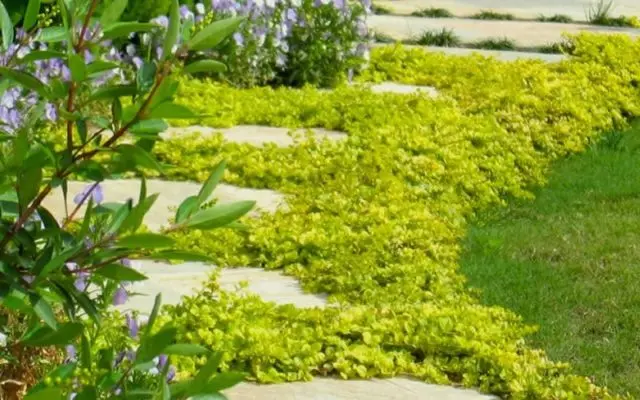
The culture grows rapidly, and every 10 years it needs to be replanted.
Preparation for winter
The frost-resistant loosestrife calmly endures cold winters and can grow even in Siberia. The aerial part of the plant dies off for the winter, therefore, shortly before the onset of frost, the lashes of the shoots are cut flush with the ground.
It is not necessary to carefully cover the plant for the winter. As part of the preparation, it is enough to mulch the area with the monetized loosestrife with peat or humus, and then throw it with straw or spruce branches. When growing loosestrife of a coin house on an open balcony, you can use the dry shoots of the plant itself as a winter shelter.
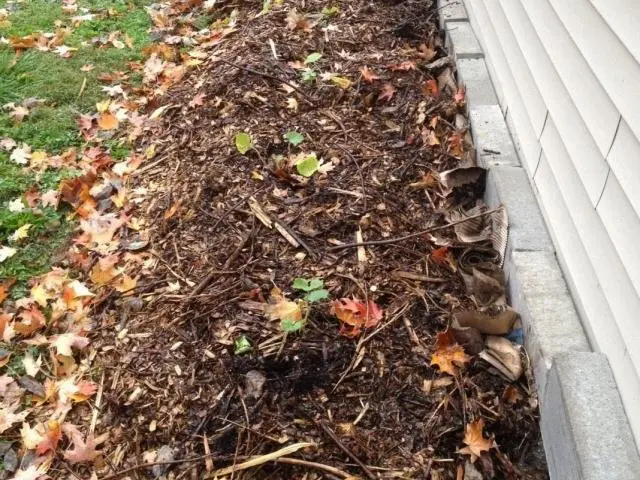
For the winter, cut meadow tea can be mulched
Diseases and pests
A hardy perennial rarely suffers from insects and diseases. The only danger for him is:
- powdery mildew, usually a plaque on the leaves appears in a damp and humid summer; copper sulphate or Fundazol is used to combat the disease;

In wet summer, meadow tea can suffer from powdery mildew.
- aphid – if green insects appear on the leaves, loosestrife is treated with insecticides, for example, Biotlin or Antitlin.

Of insects, only aphids are dangerous for culture.
Very rarely, the leaves of the creeping loosestrife are affected by slugs. Pests in this case are harvested by hand, and then the plantings are sprayed with copper preparations.

Slugs can seriously damage grassland tea growth
The use of coin loosestrife
The coined loosestrife flower has not only decorative, but also medicinal value. The plant helps a lot.
- with cough and shortness of breath;
- with rheumatism;
- with gastrointestinal disorders;
- with inflammatory diseases of the throat and oral cavity;
- with headaches and anemia;
- with beriberi and convulsions;
- with skin diseases and thrush.
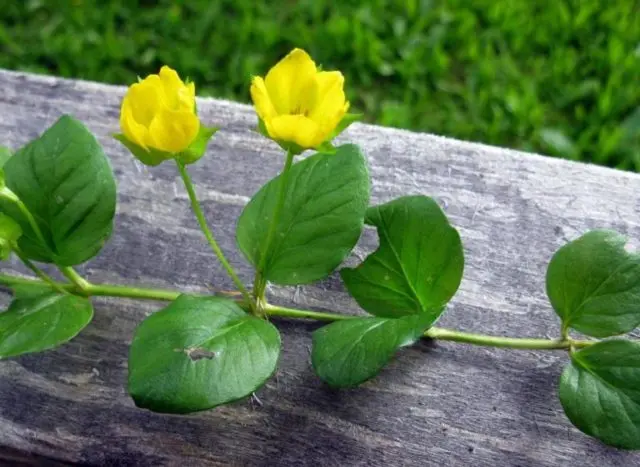
Leaves, stems and roots of perennials are used in folk medicine
Infusions and decoctions with anti-inflammatory and strengthening effects are prepared from the leaves, powder from the roots helps with bleeding and pain. The leaves of the plant can be applied as a compress to irritations and wounds on the skin, and fresh juice is allowed to lubricate insect bites. Drops based on loosestrife help stop nosebleeds.
Collection, procurement, storage of raw materials
For medicinal use, it is customary to harvest the whole perennial, along with roots and shoots. The collection is usually carried out during flowering, since during this period meadow tea contains the maximum amount of vitamin C.
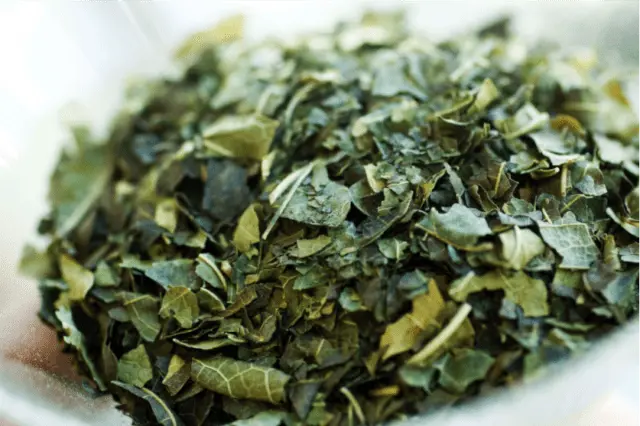
Raw materials for treatment are harvested during the flowering period.
The bush of the coined loosestrife must be carefully dug up and removed from the ground, shaken off lumps of earth, thoroughly washed and dried under a canopy in the open air. Store raw materials in a paper bag in a dark and warm place with low humidity, and the plant retains its beneficial properties for up to 3 years.
Conclusion
Monetary loosestrife is a beautiful and unpretentious ground cover plant. You can breed a culture in the garden, in closed containers and at home, with regular moisture, the perennial grows very quickly.










